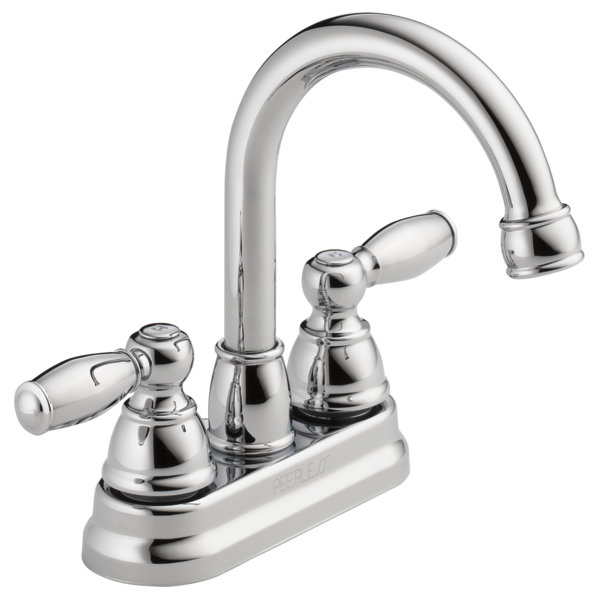No matter whether it's really a small bathroom or perhaps a luxurious and large understand bathroom, there'll be a sink faucet. With some research on the internet, you might even get beautiful pieces at very low prices. And of course, many more finishes like oil rubbed bronze, Venetian bronze, black iron and weathered copper are being made available for great diversity in bathroom faucet finishes.
Images about Double Handle Bathroom Faucet

Due to the increasing range of popularity of undermount bathroom sink, you should take it in to account specifically in building a more classy bathroom layout. Depending upon the sink, you could select from widespread, center set, single whole and mini widespread models. An additional choice may be a chrome faucet.
MOEN Banbury 4 in. Centerset Double Handle Bathroom Faucet in

You may in addition select fixtures based on the perception that you've imagined for the bathroom of yours. Bathroom faucets come in individual hole, centerset, and widespread assemblies. Second, you have to look for the design that you prefer and also the finish type that you want. Moen customers are able to choose the features they really want in a faucet.
American Standard Rumson 8 in. Widespread 2-Handle Bathroom Faucet

If needed, work with a plumber for this such you won't make some needless accidents. Regardless of which finish you decide on, the bathroom of yours will appear sophisticated with Delta bathroom goodies. Trust me, the final thing you would prefer is for the bathroom to look odd to the eyes.
Pfister LF049PDKK Pasadena 2-Handle 8 Inch Widespread Bathroom Faucet in Brushed Nickel

P299685LF – Two Handle Bathroom Faucet

Two Handle Widespread Bathroom Faucet

Pfister Vedra 8 in. Widespread Double Handle Bathroom Faucet in

WOWOW Bathroom Faucet 2 Handle 4 Inch Centerset Bathroom Sink Faucet, Lead-Free Basin Mixer Tap with Lift Rod Drain Stopper, 2 Handle Centerset

Peerless Centerset Two Handle Bathroom Faucet in Chrome

Two Handle Widespread Bathroom Faucet

Pfister Ladera 8 in. Widespread 2-Handle Bathroom Faucet in Spot

Tallinn 8″ widespread two-handle bathroom faucet

PARLOS Double-Handle Lavatory Faucet with Metal Drain Assembly and Supply Hose Lead-Free cUPC Bathroom Faucet Mixer Two-Handle Lavatory Vanity Utility

Delta Portwood 8 in. Widespread 2-Handle Bathroom Faucet in Chrome

Related Posts:
- Removing Bathroom Faucet Nuts
- Replace Cartridge Bathroom Faucet
- Traditional Bathroom Faucets
- Old Style Bathroom Faucets
- Tuscan Bathroom Faucets
- Copper Single Hole Bathroom Faucet
- How To Fix A Leaky Delta Bathroom Faucet
- Delta Bathroom Faucet Cartridge
- Moen Bathroom Faucet Parts Breakdown
- Gold Finish Bathroom Faucets